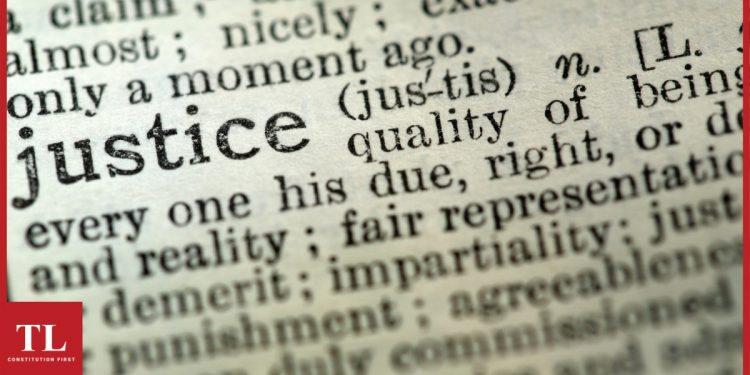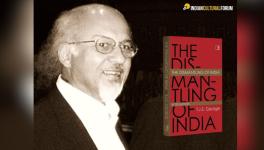Five Reasons Why George Floyd Got Justice and Faizan May Never Do So

Analysing the recent landmark judgment delivered by a Minnesota district court in the United States convicting the police officer Derek Chauvin for the murder of George Floyd last year, PAMELA PHILIPOSE compares Floyd’s killing with that of Faizan, a young Muslim by the Delhi police last year, and writes about the lessons that the Indian criminal justice system should draw from the same.
—–
If there was one international news story that briefly shifted media focus from the pandemic, it was a homicide trial playing out in a Minnesota district court. The trial in State of Minnesota v. Derek Michael Chauvin (27-CR-20-12646) began on March 8 and ended on April 20, after 45 witnesses had testified. The verdict held Derek Chauvin, a former police officer, guilty of the charges of committing second-degree unintentional murder, third-degree murder, and second-degree manslaughter on George Floyd on May 25, 2020.
Also read: Are Armed Policemen Playing Ghost Assailant Against Dissidents?
The trial will go down in history as one of those rare moments where a country with a history steeped in racial violence and injustice turned the mirror on itself and asked some extremely difficult questions.
Whether this verdict will alter the reality of police violence against black people in the US is an open question. The data provides little room for false comfort: as per one estimate, between 2015 and 2020, at least 135 black men and women across the US were killed in police firing. According to another dataset, over 200 black persons were shot dead each year by the police in the US between 2017 and 2020, with the first three months of this year already registering 30 more deaths of this kind.
India needs to take note of this verdict – for five reasons. It can perhaps tell us why the family of George Floyd could get some closure, while the broken mother of Faizan — a young man from Maujpur, northeast Delhi, who was also a victim of indescribable brutality at the hands of the Delhi Police, and whose torture was also videographed – will probably never achieve it.
Also read: Delhi Riots: A Year Later, No Breakthrough in Six Murder Cases
Pressure from public and media for justice during trial
The first aspect of this case that strikes us was the unceasing public pressure for justice to be delivered. This began right at the crime scene, when a small crowd of passers-by outside Cup Foods, where Floyd was first detained by the Minneapolis police, observed how a hand-cuffed Floyd floundered under the full weight of Chauvin’s knee for 9 minutes and 29 seconds, repeatedly pleading for his life before finally falling silent. They screamed and cried out to Chauvin to take his knee off his victim, but to no avail. Many of these bystanders recorded the incident and made it their responsibility to come before the jury. Their unflinching testimony of outrage and powerlessness proved invaluable in the case’s final outcome.
Whether this verdict will alter the reality of police violence against black people in the US is an open question. The data provides little room for false comfort: as per one estimate, between 2015 and 2020, at least 135 black men and women across the US were killed in police firing. According to another dataset, over 200 black persons were shot dead each year by the police in the US between 2017 and 2020, with the first three months of this year already registering 30 more deaths of this kind.
It is these few good men and women, who chose not to walk away, who must be acknowledged as the first representatives of the public, breathing new life into the embers of anti-racism struggles in the US. The fireball of fury that followed, ripping through US city after US city, and eventually across the world, first emerged from that sidewalk near Cup Foods. Even Kolkata saw a small protest outside the American Centre there, and women activists in India released a public statement which concluded with the words, “Along with the Black community in the US, and drawing strength from their struggle, we also shout out loud, ‘Muslim Lives Matter’, ‘Dalit Lives Matter’, ‘Adivasi Lives Matter’, ‘Kashmiri Lives Matter’, ‘Trans Lives Matter’.”
The question is often raised that if Darnella Frazier had not recorded and released that video which graphically recorded the last moment of Floyd’s life, would Chauvin have walked free, as so many of his compeers accused of similar violence had been able to do. The answer is clear: very likely.
This brings us to the second factor that created the present moment in Minneapolis: uninterrupted media attention on every single detail of the case, from the videos taken at the site where the incident happened last May, right down to the minutiae of the jury trial.
Social media footage melded into mainstream media coverage, allowing viewers and readers to participate directly in the distress of Floyd, the anger and passion on the street, and the often clinical arguments live-streamed in the Minneapolis courtroom — a first in the state of Minnesota.
Impartial and unbiased testimonies by police officials and experts
Also striking was the impartiality of many of the law enforcement officers speaking on the case — the third aspect under consideration. The pressure on senior police officers to try and bail out their colleague must have been immense, yet we had the Chief of the Minneapolis Police, Medaria Arradondo, himself admitting: “There is an initial reasonableness in trying to get him under control in the first few seconds, but once there was no longer any resistance, and clearly when Mr Floyd was no longer responsive and even motionless, to continue to apply that level of force to a person proned out, handcuffed behind their back – that in no way, shape or form is anything that is by policy, is not part of our training and is certainly not part of our ethics or our values.”
Reading this, one cannot but recall the preposterous claim made by Uttar Pradesh’s Additional Director General of Police (Law and Order) Prashant Kumar, after last September’s Hathras gang rape, that no rape had actually occurred. In the Hathras matter, we also saw dodgy forensic reports and punishment being meted out to doctors who disagreed with the police version of events.
Also read: 13 Important Observations by the Allahabad High Court in the alleged Hathras Gangrape Case
In the Minneapolis trial, the medical experts brought in, conducted themselves professionally, even when they made arguments that went against the prosecution’s case. Take Dr. David Fowler – a retired forensic pathologist — who the defense had brought in. He argued that Floyd’s death could be classified as “undetermined”, yet he agreed when cross-examined that Floyd seemed to have lost consciousness after cardiac arrest some four to five minutes into the restraint, and if he had been attended to medically he could have been revived.
Also read: India’s Lessons From The Black Abolitionists
Others like Dr. Andrew Baker had no hesitation in coming to the heart of the matter: Floyd’s death was caused by “cardiopulmonary arrest complicating law enforcement subdual, restraint, and neck compression.” The young paramedic, Derek Smith, who was called in even as Chauvin’s knee was on Floyd, had no hesitancy in testifying that he could not detect a pulse and that he thought “he (Floyd) was dead.” The capacity of professionals and institutions – in this case, the medical fraternity — to withstand enormous peer pressure is the fourth noteworthy aspect of this case.
Floyd’s murder a turning point in US politics?
Finally, enormous domestic political investment in the case was seen in the US. The George Floyd homicide and police reform were significant tropes in the US presidential election of 2020. It was a factor in the distinct rise of voter registrations among young African-Americans, and it likely helped to steer the current US President Joe Biden to victory. After the verdict, Biden publicly acknowledged that Floyd’s death was “a murder in the full light of day” which has “ripped the blinders off for the whole world to see systemic racism”.
Reading this, one cannot but recall the preposterous claim made by Uttar Pradesh’s Additional Director General of Police (Law and Order) Prashant Kumar, after last September’s Hathras gang rape, that no rape had actually occurred. In the Hathras matter, we also saw dodgy forensic reports and punishment being meted out to doctors who disagreed with the police version of events.
History will judge Biden by what he does during his tenure to solve tackle “systemic racism”. But his acknowledgment comes as a reminder that at home in India, Prime Minister Narendra Modi has not had a word to spare on Faizan, a 23-year-old tailor whose life was so cruelly cut short by the Delhi Police – just for being Muslim.
(Pamela Philipose is a senior Delhi-based journalist and the Public Editor of The Wire.in. Her book, ‘Media’s Shifting Terrain Five Years that Transformed the Way India Communicates’ (Orient BlackSwan), came out in 2019. The views expressed are personal.)
The article was originally published in The Leaflet.
Get the latest reports & analysis with people's perspective on Protests, movements & deep analytical videos, discussions of the current affairs in your Telegram app. Subscribe to NewsClick's Telegram channel & get Real-Time updates on stories, as they get published on our website.
























